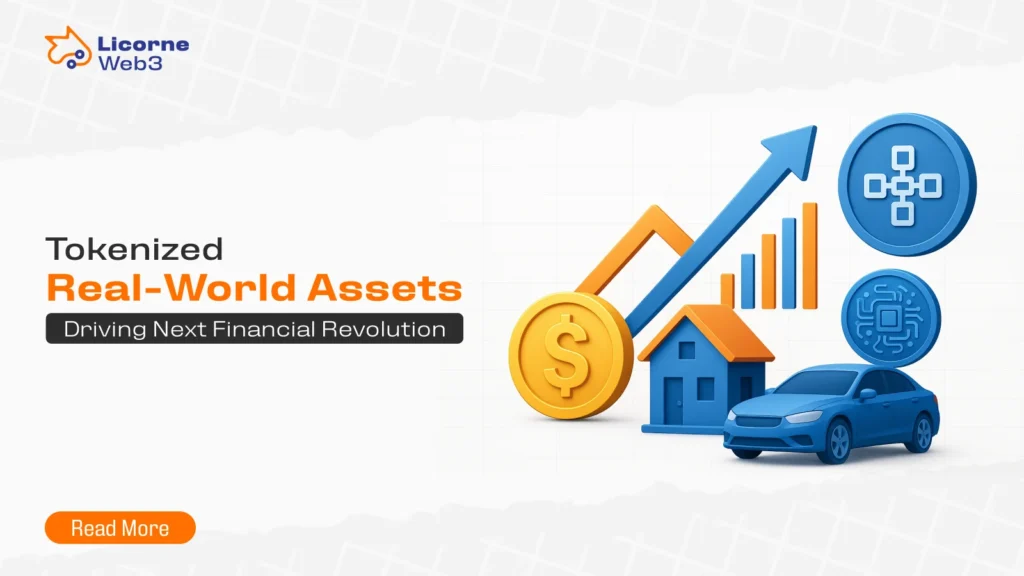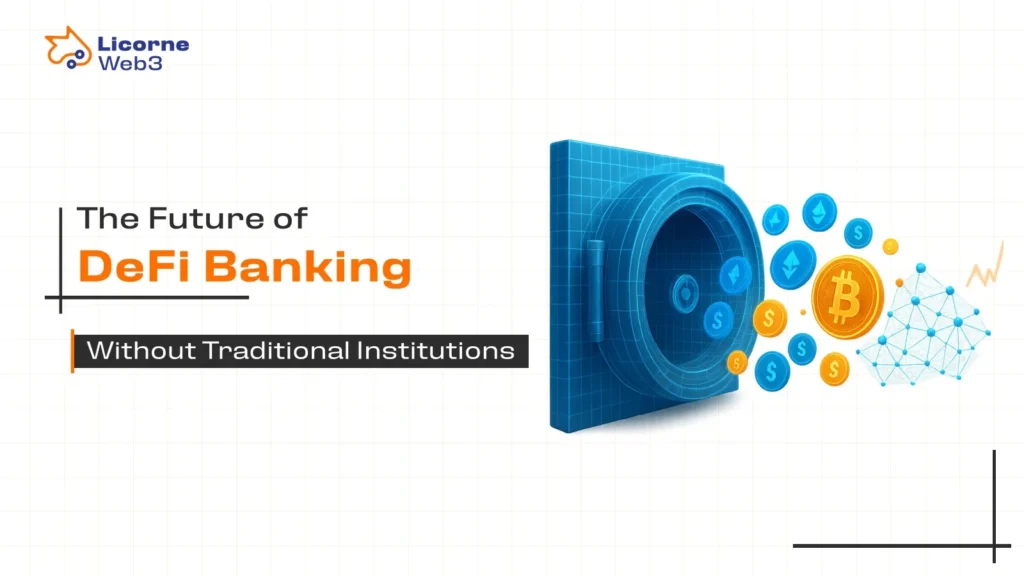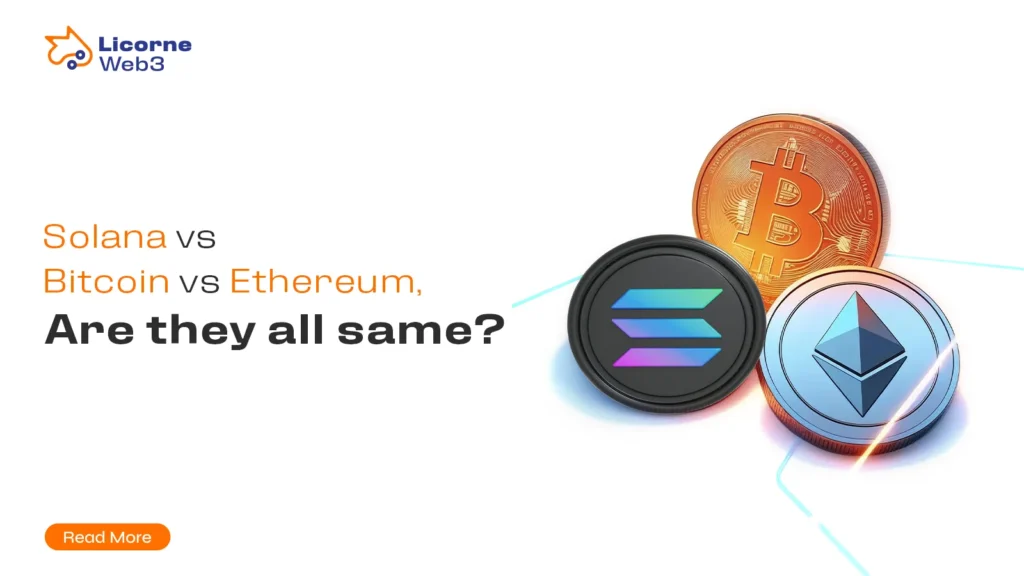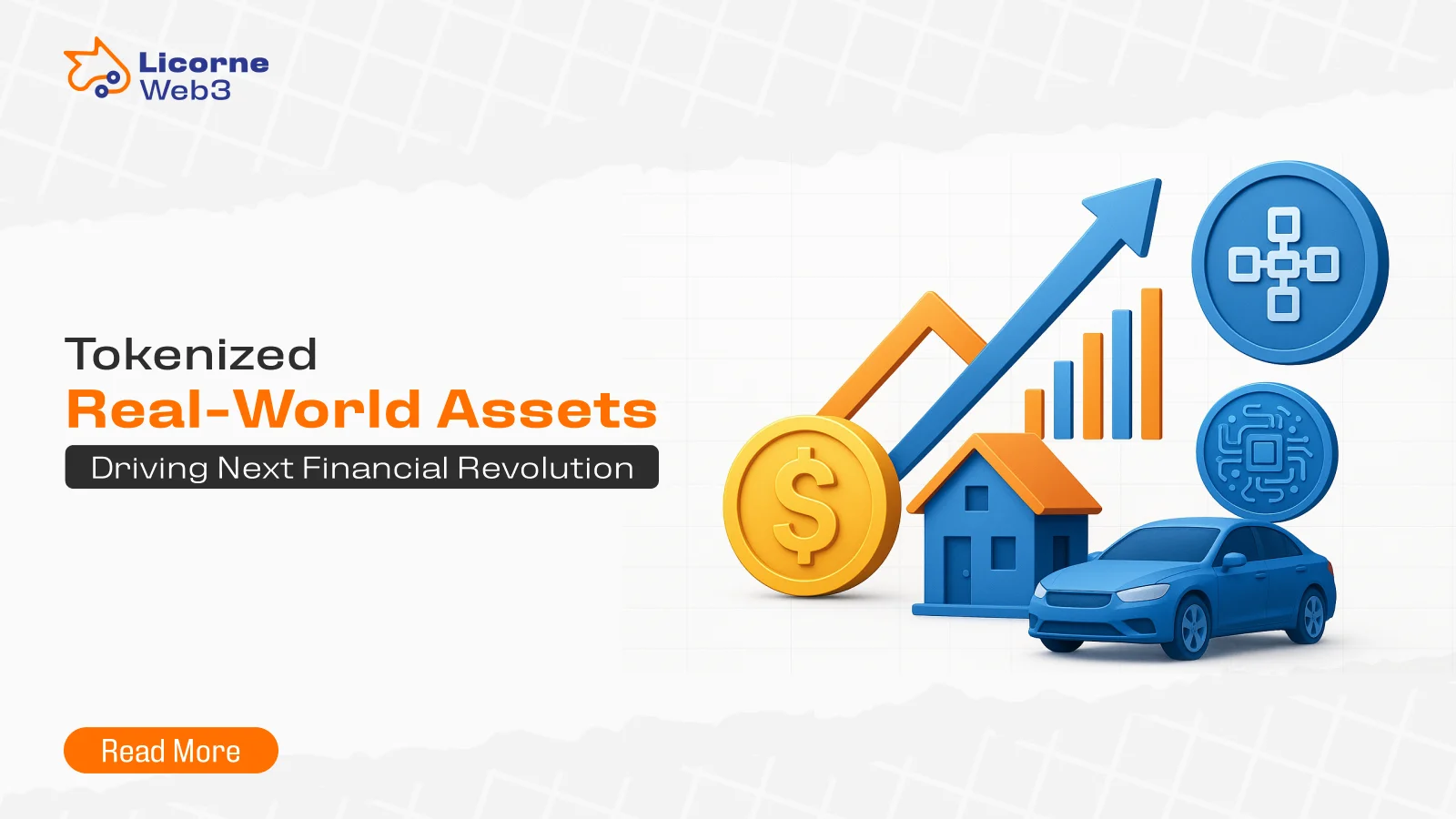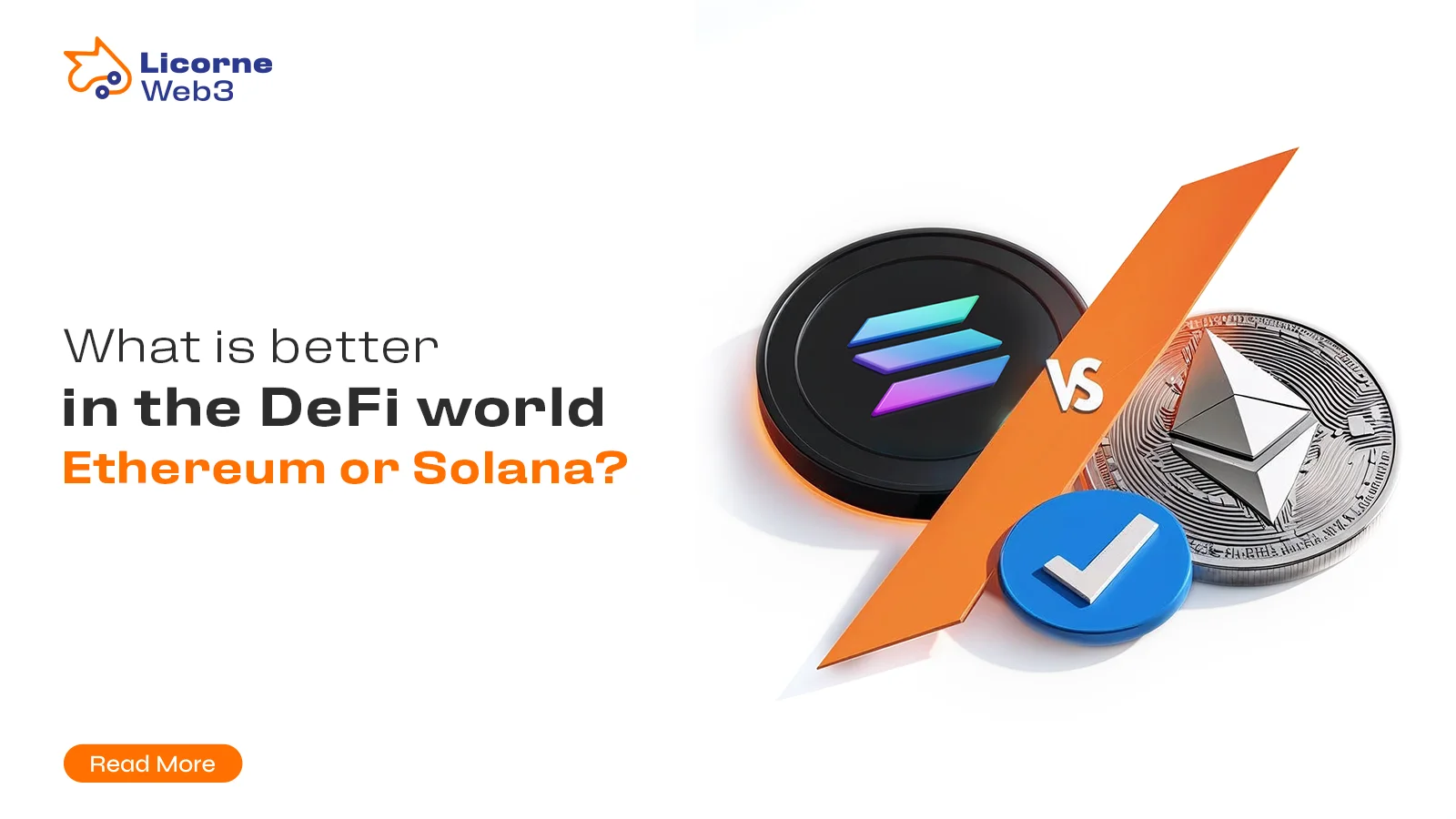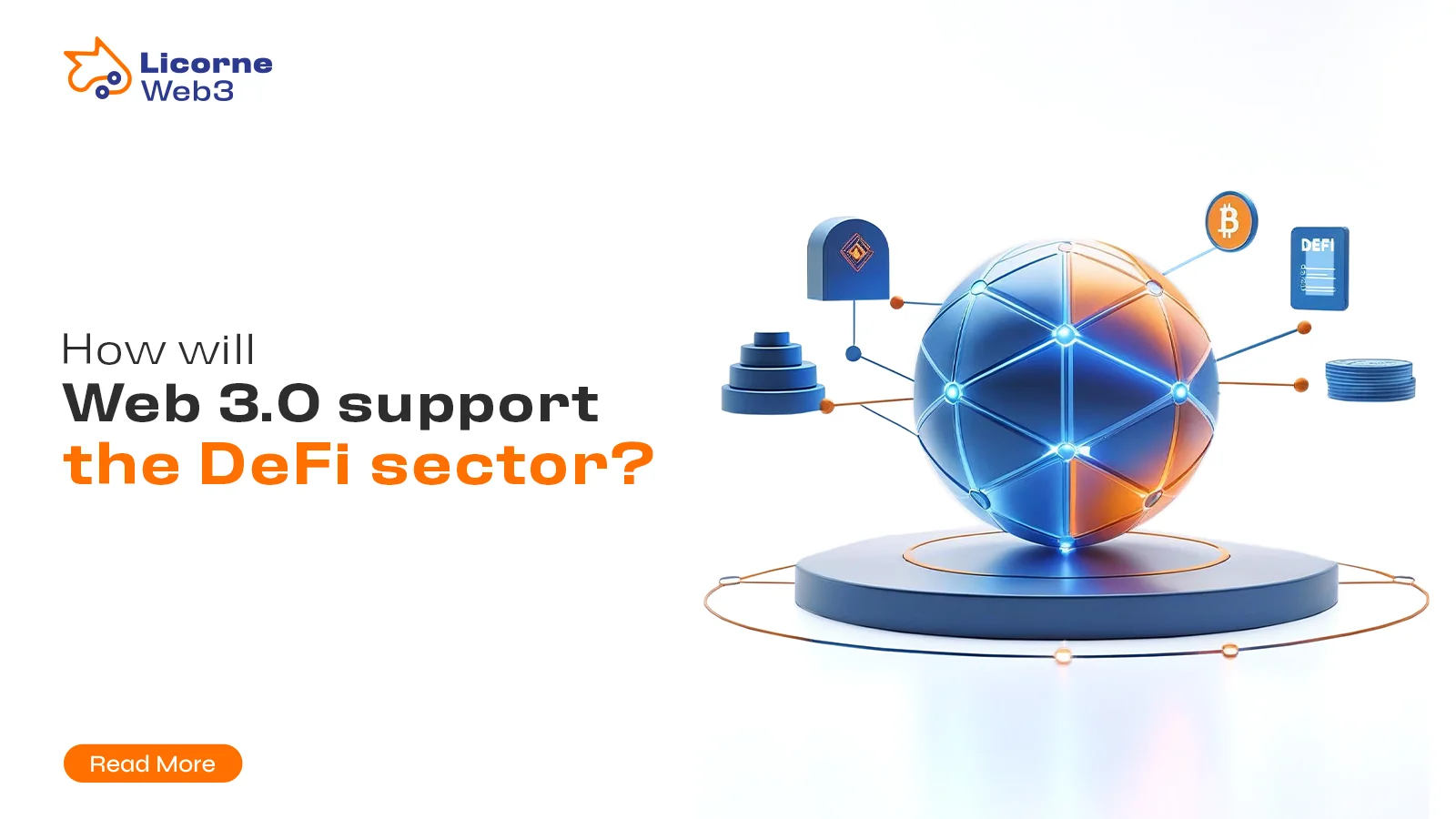Over the past two decades, the evolving technology has offered early signs of a shift to the digital future through blockchain, cryptocurrencies, and the metaverse. Each one, on its own, marked an industry revolution. When they come together, it’s the epitome of something new that will digitally materialize.
This blog seeks to find ways through which blockchain and cryptocurrency go with the metaverse in making seamless realities of the virtual-physical nature for the future.
Learn more about blockchain, cryptocurrency, and the metaverse in this detailed blog!
Understanding the Core Concepts
To understand the interplay between blockchain, crypto, and the metaverse, let’s start by understanding their principles:
Blockchain: A transparent and secure record-keeping system based on distributed ledger technology.
Cryptocurrency: A digital asset operating on blockchain technology, used as a medium of exchange and a store of value in decentralized ecosystems.
Metaverse: A collective virtual shared space, created by blending enhanced physical reality with persistent virtual environments. This space can be explored and experienced through the use of virtual environments, avatars, virtual reality and augmented reality.
Blockchain: The Metaverse’s Backbone
The metaverse is based on decentralization, transparency, and security; these are all fundamental features of blockchain technology. Blockchain is what enables the metaverse through the following aspects:
Ownership and Provenance: With blockchain, the ability to achieve a tamper-proof system that verifies ownership of digital assets comes with the user’s capability to prove the authenticity and history of virtual items.
Interoperability: A collection of connected virtual worlds defines the metaverse. Interoperability between platforms is made possible by standardized protocols in blockchain technology, allowing assets and identities to flow from one environment to another.
Decentralized Governance: The DAOs promote decentralized community-driven decision-making mechanisms in the metaverse. Blockchain ensures transparent and fair governance decisions.
Smart Contracts: Blockchain provides the autonomous and trustless execution of agreements through smart contracts. It can make a transaction or other interaction in a metaverse platform without the involvement of an intermediary.
Cryptocurrency: Fueling the Virtual Economy
Cryptocurrencies are a part of the backbone of the metaverse economy. They facilitate frictionless transactions, encourage participation, and unlock new economic models:
Virtual Currency: Cryptocurrencies are native currencies on metaverse platforms. They allow users to buy virtual land, items, and services. For instance, MANA is widely used in transactions within the Decentraland ecosystem.
Play-to-Earn Models: Online games like Axie Infinity and The Sandbox, reward players in crypto, creating an economic system where users earn real-world value through virtual engagement.
Tokenization: Cryptocurrencies tokenized digital and physical assets to allow users to fractionalize ownership of assets and trade them in metaverse marketplaces. In this way, access to big-value assets becomes democratized.
Non-Fungible Tokens (NFTs): Bridging Digital and Physical
NFTs are the foundation of the interplay between blockchain, crypto, and the metaverse. These unique digital assets represent ownership of virtual goods, art, or experiences. Key aspects of NFTs in the metaverse include:
Virtual Real Estate: NFTs represent parcels of virtual land in Decentraland and Somnium Space, among others, which users can build on, monetize, or sell.
Digital Collectibles: NFTs are used to sell digital art, music, and other media directly from creators to consumers, rewarding creators for their work, and ensuring an authentic, verifiable piece to be sold to the customer.
Identity and Customization: NFTs enable users the own and the trading of skin avatars and accessories, bringing unique digital personalities to the Metaverse. A personalized identity cultivates a personal sense of belonging among users.
NFTs often create an opportunity to access some exclusive events or even experiences in the metaverse such as concerts, art galleries, or private meetups.
Enhancing Social and Commercial Interactions
Metaverse is much more than an entertaining platform, it is about fundamental social and commercial transformations as follows:
Social Interaction: Through blockchain and cryptocurrencies, trustless interaction in the metaverse enables the creation of a global community irrespective of its geos or economy. Self-organization among those communities becomes feasible based on any interests, hobbies or goals in their lives.
Virtual Commerce: Brands are now using metaverse platforms to deliver immersive shopping experiences. Cryptocurrency payments ensure smooth and secure transactions. For instance, Gucci has tested the sale of digital goods in metaverse environments, which opens an opportunity for luxury brands.
Event Hosting: Virtual concerts, conferences, and exhibitions are becoming increasingly popular, and blockchain ensures that tickets are authentic and that revenue is fairly shared. Examples include concerts hosted in Fortnite and Decentraland, which attracted millions of users.
Education and Training: The metaverse is an immersive space for education and training programs. Blockchain verifies certifications and credentials acquired in such virtual environments.
Challenges and Opportunities
The interplay between blockchain, crypto, and the metaverse leads to challenges and opportunities:
Scalability: Current blockchain infrastructure must accommodate high transaction volumes for a fully realized metaverse. Layer-2 solutions and sharding are solutions for these problems.
Energy Consumption: Blockchain’s operation is highly energy-intensive. Its use in sustainable operations, like proof-of-stake in Ethereum, is the first step.
Regulation: The governments are finding it challenging to regulate decentralized technologies without killing innovation. Mainstream adoption will require clear and supportive regulations.
Accessibility: The hardware and internet requirements for participating in the metaverse are a barrier for some users. Overcoming this requires affordable and widely available technology.
This interaction brings out many opportunities also like:
Decentralized Identity: Blockchain comes in with secure, verifiable digital identities which will guarantee privacy and ownership within the metaverse. There would be no need for the middleman control of user data.
New Streams of Monetization: Cryptocurrencies and NFTs give new avenues for creators and businesses to make revenue. Musicians, like all other creatives, can now sell limited albums to their fans.
Global Inclusion: Blockchain- and crypto-backed metaverse allows the economic system to reach unprivileged populations so that more in the world might be financially included. Play-to-earn is already helping in the livelihood generation of players living in developing nations.
Improved collaboration amongst developers, creators, and users who work together within the blockchain towards innovation and growth is promoted.
The Road Ahead
Blockchain, cryptocurrency, and the metaverse are relatively new, but the overall trend is inevitable. As technology advances and adoption increases, we can expect:
Greater Interoperability: Unified standards across platforms will create a seamless user experience. Developers and companies will collaborate to ensure virtual assets and identities are portable across metaverse spaces.
Mass Adoption: More people will engage with metaverse ecosystems once it becomes more accessible. Lower hardware costs and better connectivity will be crucial for mass adoption.
Increased Safety: Innovation in blockchain technology will need to continuously tackle security worries, making the metaverse safe for users and businesses alike. This will particularly come into play as more financial and personal data are integrated into virtual worlds.
Its use cases will further develop, and thus every single aspect of life will be influenced by blockchain along with the metaverse-the decentralized workspace and virtual tourism.
Conclusion
Blockchain, cryptocurrency, and the metaverse are the new wave of the future reforming the world. These technologies are likely to reshape how we operate in the social and the physical world. Innovation and growth in this space are limitless, envisioning a future where digital and physical worlds merge seamlessly. This is the first time for businesses and users to come into this newly emerging pattern and shape it to unlock its full potential.
In such a reality where the distinctions between the virtual and real world disappear, integration into blockchain, crypto, and the metaverse will not only change industries but, in turn, redefine society as a whole. The journey ahead is one of exploration, collaboration, and limitless possibilities.
Author
-

I am a content writer with a passion for creating engaging content. I aim to simplify complex topics for readers through writing. With a keen interest in blockchain and crypto, I strive to foster understanding and empower readers to explore new ideas!
View all posts



